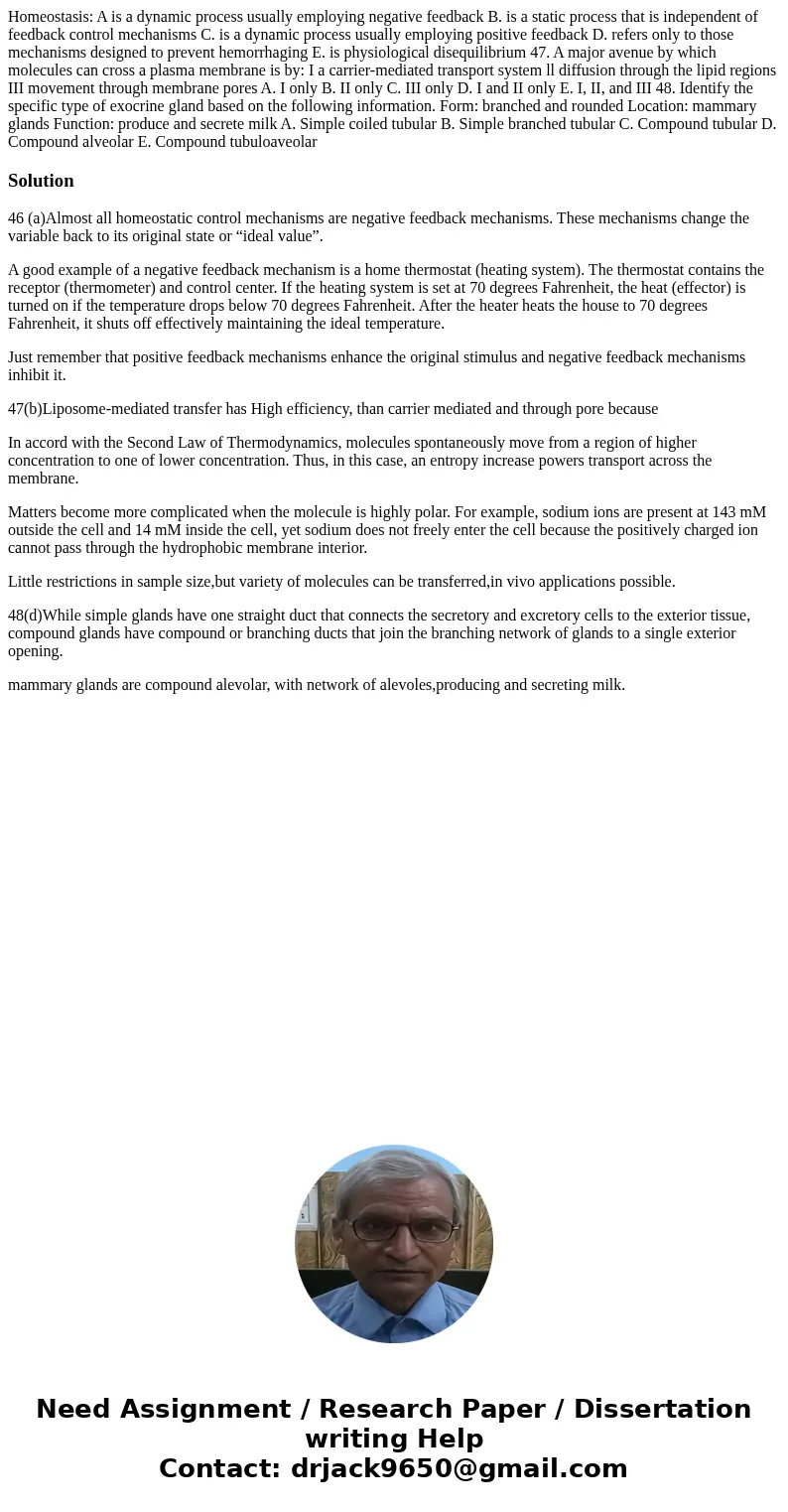Homeostasis A is a dynamic process usually employing negativ
Solution
46 (a)Almost all homeostatic control mechanisms are negative feedback mechanisms. These mechanisms change the variable back to its original state or “ideal value”.
A good example of a negative feedback mechanism is a home thermostat (heating system). The thermostat contains the receptor (thermometer) and control center. If the heating system is set at 70 degrees Fahrenheit, the heat (effector) is turned on if the temperature drops below 70 degrees Fahrenheit. After the heater heats the house to 70 degrees Fahrenheit, it shuts off effectively maintaining the ideal temperature.
Just remember that positive feedback mechanisms enhance the original stimulus and negative feedback mechanisms inhibit it.
47(b)Liposome-mediated transfer has High efficiency, than carrier mediated and through pore because
In accord with the Second Law of Thermodynamics, molecules spontaneously move from a region of higher concentration to one of lower concentration. Thus, in this case, an entropy increase powers transport across the membrane.
Matters become more complicated when the molecule is highly polar. For example, sodium ions are present at 143 mM outside the cell and 14 mM inside the cell, yet sodium does not freely enter the cell because the positively charged ion cannot pass through the hydrophobic membrane interior.
Little restrictions in sample size,but variety of molecules can be transferred,in vivo applications possible.
48(d)While simple glands have one straight duct that connects the secretory and excretory cells to the exterior tissue, compound glands have compound or branching ducts that join the branching network of glands to a single exterior opening.
mammary glands are compound alevolar, with network of alevoles,producing and secreting milk.

 Homework Sourse
Homework Sourse